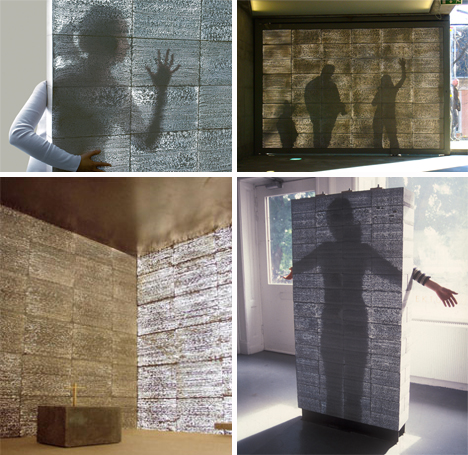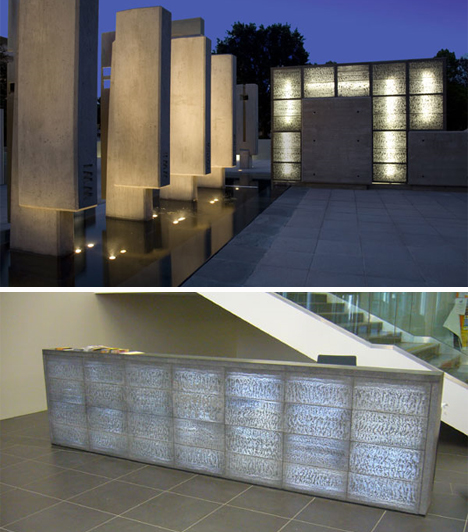
When you think of concrete, your first thought is probably of the hard, rough, unattractive stuff that makes up sidewalks and streets. Buildings made of concrete are typically not the most aesthetically pleasing or the most inviting. But when Hungarian architect Aron Losonczi invented LiTraCon in 2001, he gave us a whole new way to see concrete.

LiTraCon, short for light transmitting concrete, is an innovative new combination of optical fibers and light concrete. The resulting concrete is just as strong as conventional concrete, but it transmits light like glass. The optical fibers are small enough that they aren’t visible in the finished product; the surface of the concrete is homogenous while the structure remains sturdy.

Blocks of LiTraCon can be produced in different sizes, giving builders a wide variety of options when working with the material. So far, the blocks have been used in many buildings, for everything from desks to interior and exterior walls to lamps, and even an outdoor memorial. The material transmits light up to 20 meters, so the concrete can be very thick while still making use of its light transmitting capabilities. The possible uses for LiTraCon are nearly endless. The blocks may even be used in the construction of energy-smart homes to reduce electricity costs by allowing more daylight to penetrate the structure.

